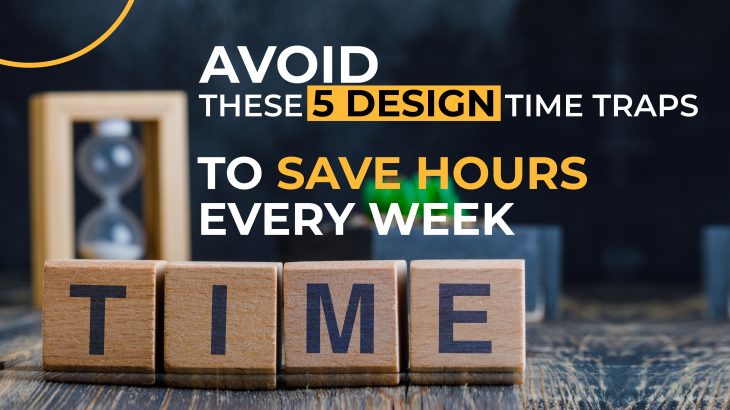Design projects move fast, ideas evolve, deadlines tighten, and revisions pile up before anyone realises it. In the creative rush, hours often slip away unnoticed. It’s rarely the big errors that cause the most delay; more often, it’s the small habits that quietly drain focus and slow progress.
Time is one of the most valuable creative tools in any design process. Managing it well allows for better work, clearer thinking, and smoother execution. The following are five common time traps that quietly eat a designer’s productivity and how to avoid them.
1. Endless Inspiration Scrolling
Online platforms are rich sources of visual inspiration, but endless browsing can easily blur creative direction. What begins as research can turn into hours of scrolling through Pinterest boards or design feeds, leaving little energy for actual creation. The problem lies in mistaking consumption for ideation. Too much exposure to others’ work can dilute one’s own instincts and make it harder to initiate the first step.

A simple way to prevent this is to limit inspiration time. Setting a short window for research and collecting references keeps the focus sharp. Curated mood boards or saved folders can serve as visual anchors, but the real ideas start taking shape once hands move away from the screen and toward sketches or prototypes. Inspiration works best as a spark, not as a substitute for action.
2. Redoing Finished Work
Perfectionism is a familiar trap in design. Refining details can certainly elevate a concept, but repeatedly revisiting completed work often leads to fatigue and diminishing returns. Many designers restart projects because a new idea appears mid-process or a small imperfection becomes magnified. However, without a clear reason for revision, the cycle of redoing can stall progress entirely.

Setting clear review rounds helps maintain discipline. When a version fulfills its design goals, it can be marked as final and documented. Feedback from peers or mentors during earlier stages can also bring clarity and prevent unnecessary revisions later. Progress in design depends on closure; every project becomes a foundation for the next, rather than a never-ending pursuit of perfection.
3. Starting Without a Clear Direction
Jumping into design tools without a defined goal often leads to confusion and rework. Without clarity, layouts become cluttered, ideas lose coherence, and the design process slows down. A strong start, on the other hand, channels creative energy efficiently and minimizes wasted effort.

Creating a short design brief before beginning any project provides structure. Outlining the core purpose, audience, and intended emotion gives a framework for decision-making. Even simple sketches or wireframes can guide exploration in a focused direction. A few minutes spent defining intent early can save hours of correction later.
4. Multitasking and ToolHopping
Design work today often involves juggling multiple tools, tabs, and projects. While this may feel efficient, it actually fragments concentration and disrupts creative flow. Every time focus shifts between platforms or projects, the brain needs time to readjust, gradually eating away at productivity.

Grouping similar tasks together and dedicating uninterrupted time blocks for deep work helps maintain rhythm. Centralizing notes, references, and communication within the workspace reduces distraction and improves continuity. Structured focus time, even in short bursts, allows ideas to develop with greater depth and precision. Sustained attention is often the hidden driver of creative quality.
5. Ignoring Feedback Until the End
Delaying feedback until the final stage can lead to misalignment and last-minute stress. When input arrives late, even small changes can require large structural adjustments, adding pressure to already tight timelines.

Integrating feedback at multiple points throughout a project allows for gradual refinement. Early critiques help identify directional issues before too much time is invested. Short, scheduled review sessions also encourage collaboration and keep all contributors aligned. Constructive feedback at the right time is an investment in better results.
Avoiding these five time traps is less about speed and more about balance between exploration and execution, inspiration and discipline. Clear beginnings, structured workflows, and timely collaboration ensure that creative energy is spent where it matters most.
At ARCH College of Design & Business, such principles are embedded in every stage of learning. Through live projects, critiques, and guided mentorship, students experience how process and time management shape creative excellence. By understanding how to navigate common time traps, emerging designers learn to protect both the quality of their work and the calm needed to create it.
Ready to Design Smarter, Create Better, and Lead with Purpose? Join ARCH College of Design & Business and learn how to turn creativity into a powerful, disciplined practice.
